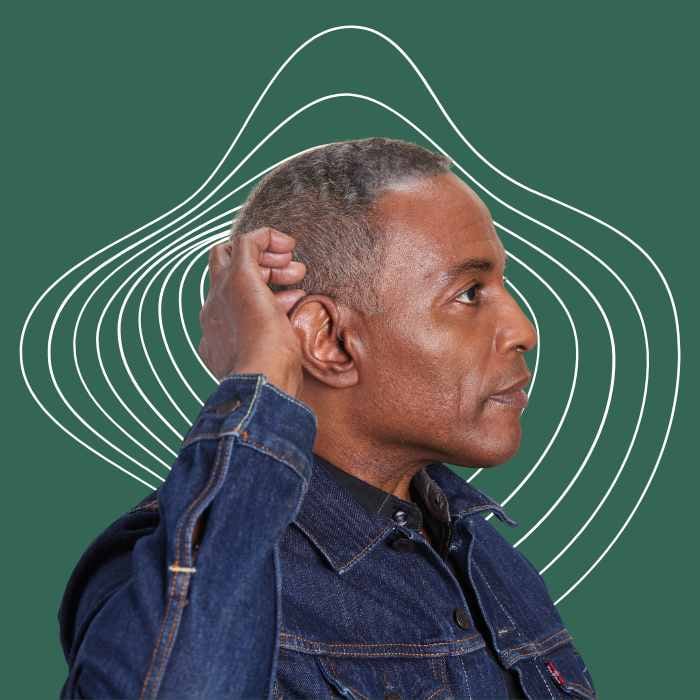Key Takeaways:
- The human auditory pathway involves an intricate chain of events, beginning with pressure waves in the air that cause air particles to vibrate.
- In the middle ear, the moving air particles cause the eardrum and middle ear bones to move mechanically.
- Then the fluid in the inner ear is brought into motion, and finally the auditory nerve fires electrical signals that are sent to the brain.

Have you ever wondered how we hear sounds around us? It’s an intricate process that involves multiple steps, from sound waves entering our ears to the brain interpreting them as music, speech, or noise.
This process occurs in a fraction of a second, allowing us to have conversations, recognize familiar voices, and engage in other tasks. As an audiologist, I find this topic fascinating and enjoy helping patients understand how they hear.
So, how exactly do we hear? In this article, I’ll break down the process of hearing step by step so you, too, can understand how it all works.
How We Hear

Step 1: Sound Waves Enter Our Ears
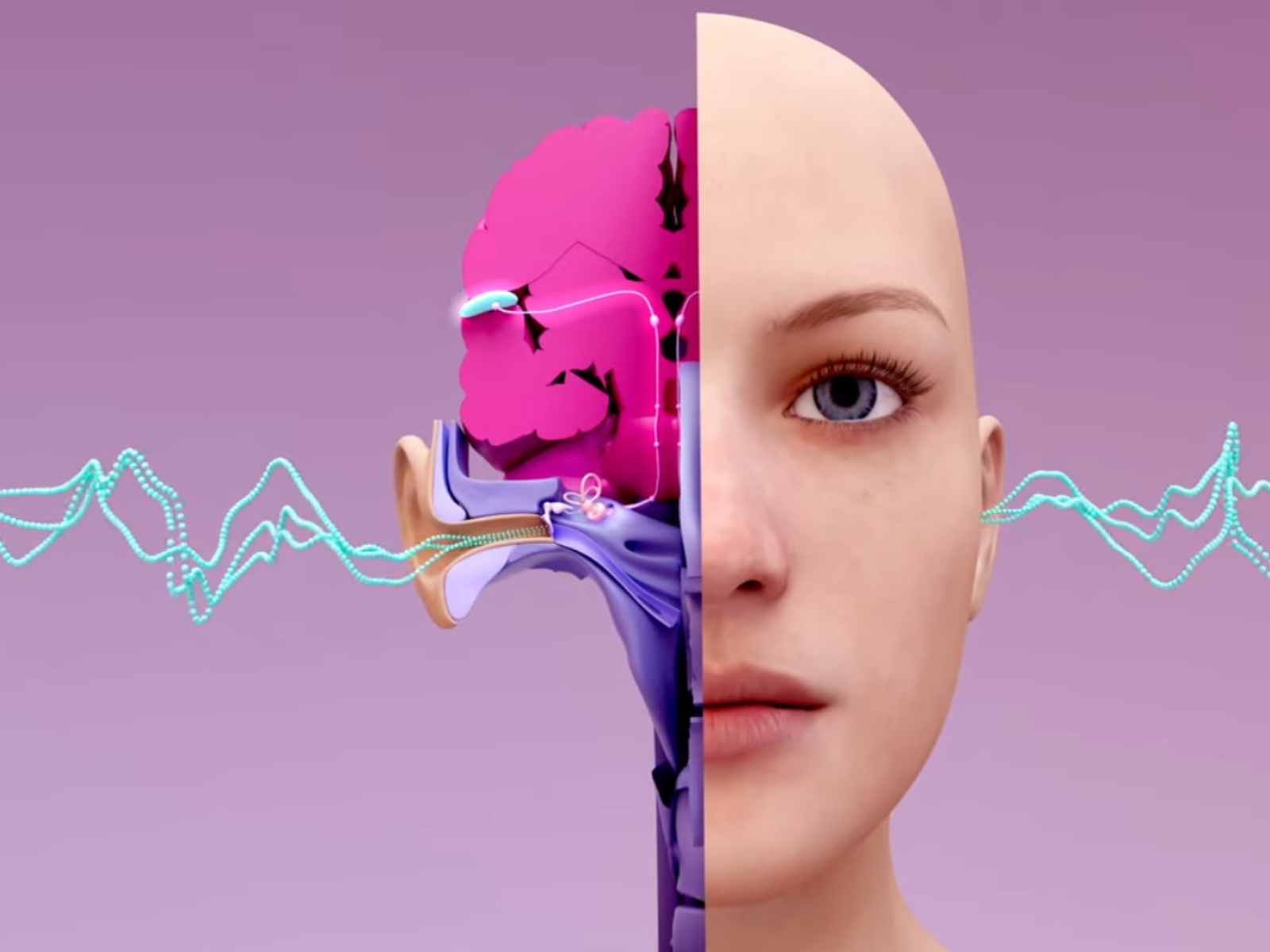
It all begins with sound waves traveling through the air and entering our outer ear.
Sound waves are pressure waves that cause patterns of rarefaction and compression, which cause the eardrum to vibrate. The eardrum is a thin membrane, made of three layers, and it divides the outer ear from the middle ear.
Did you know that the eardrum moves only 0.1 the distance of a hydrogen molecule (0.000000001 mm) for a sound to be heard? Yep, it’s true!
So it’s quite fascinating that this tiny movement triggers a string of events, allowing us to hear.
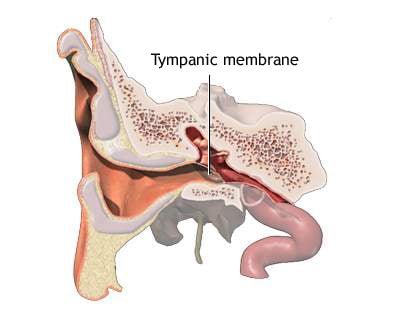
Step 2: Pressure Waves Become Mechanical Energy
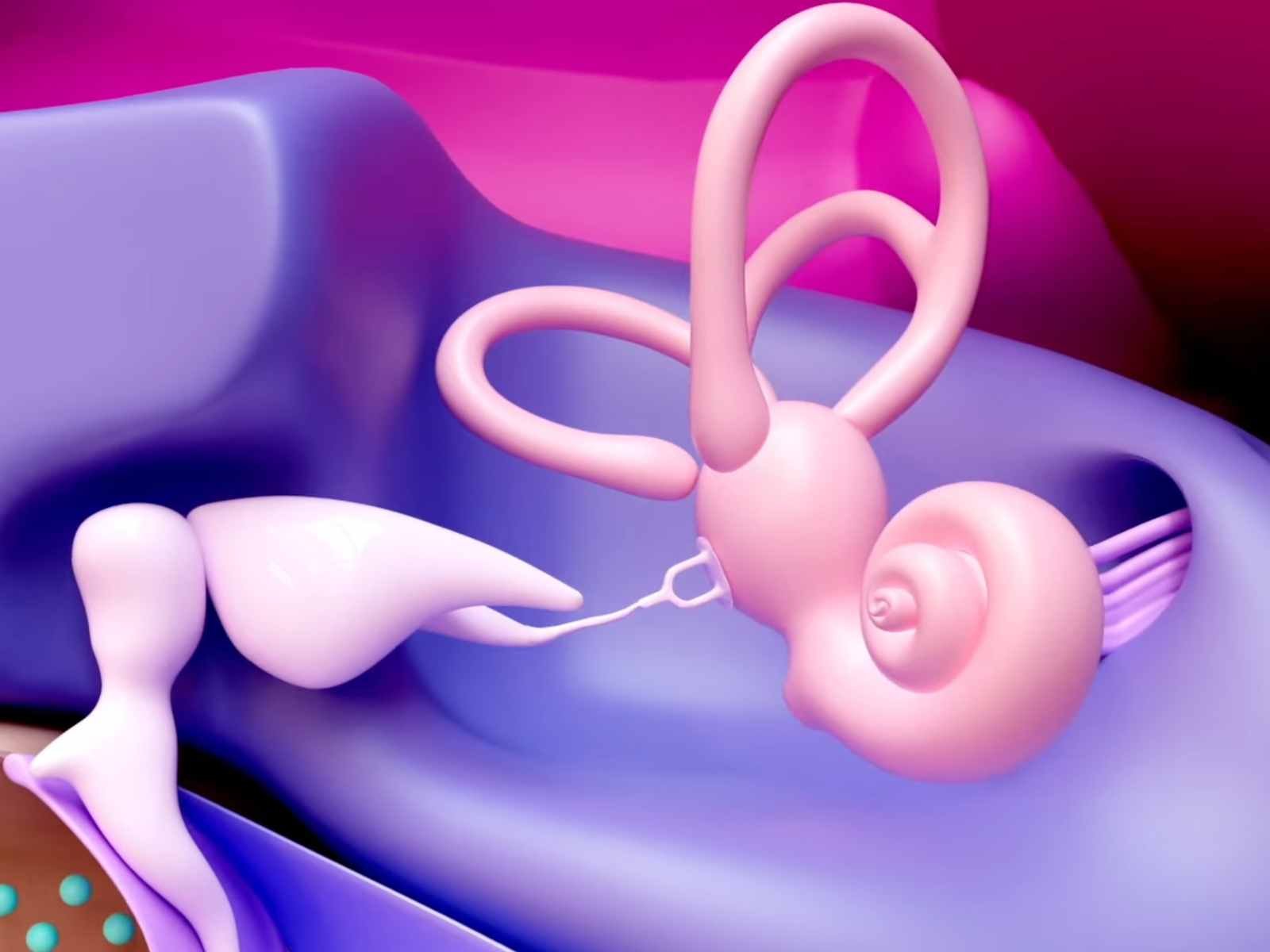
The eardrum’s vibrations are then passed on to the bones of the middle ear.
Did you know that the ossicles are the smallest bones in the human body? Individually, they are known as the malleus, incus, and stapes—and they are quite tiny!
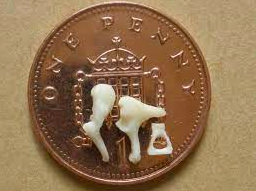
The three bones work together as a chain to receive the movements of the eardrum:
- Transform the movements into mechanical energy
- Amplify these sounds before sending them to the inner ear
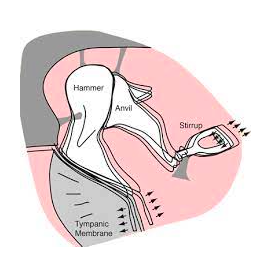
Have you had your head underwater in a pool and noticed how sounds seem muted? The ear has devised a smart workaround.
As the sound energy moves from the air-filled middle ear space to the fluid-filled inner ear, the lever action of the middle ear bones helps overcome this difference. This is because sound travels much more easily through the air than in fluid.

Step 3: The Cochlea Transforms Sound Waves into Hydraulic Energy
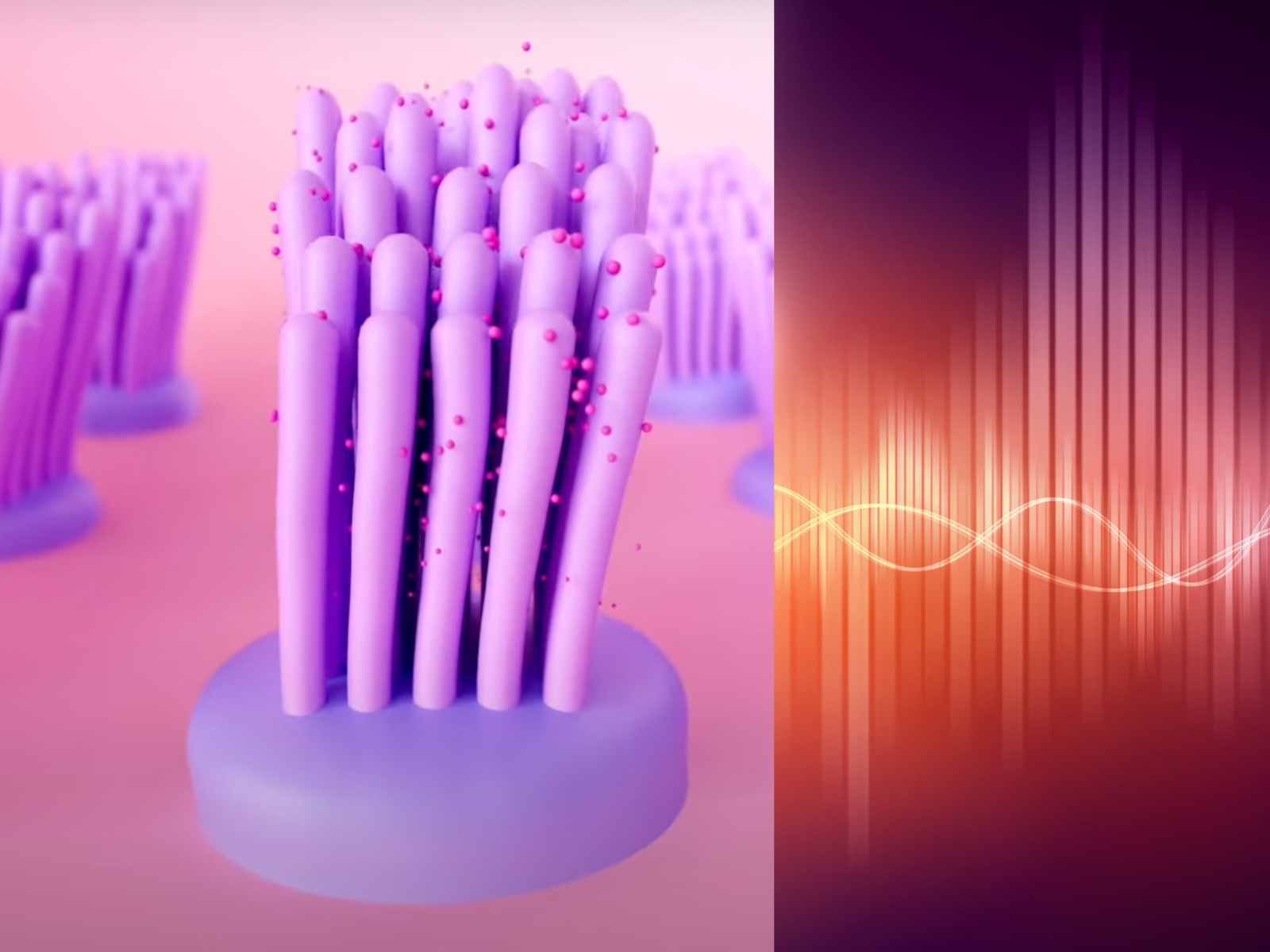
The inner ear contains a snail-shaped structure called the cochlea, filled with fluid.
The cochlea is separated into different segments through several membranes:
- Basilar membrane
- Tectorial membrane
- Reissner’s membrane
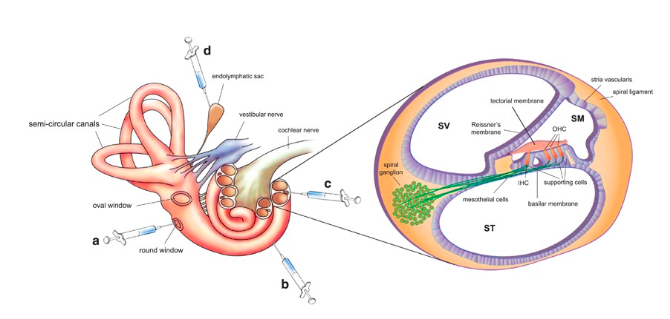
These tiny structures, called hair cells, are embedded in the tectorial and basilar membranes.
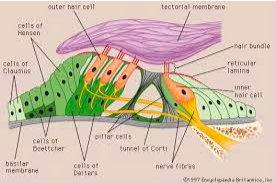
As the amplified vibrations enter the cochlea, they generate a traveling wave on the basilar membrane.
This movement triggers chemical reactions in the hair cells, causing the outer hair cells to move, thanks to a motor protein called prestin.
The scala media in the cochlea is filled with endolymph, which is a fluid rich in potassium.
As the stereocilia at the top of the hair cell move, the resulting influx of potassium sets up the next step: Sending the sound to the brain via the auditory nerve.
The pattern of depolarization and hyperpolarization shapes the messages picked up by the auditory nerve.
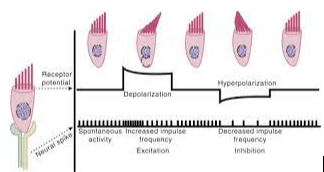
Step 4: The Auditory Nerve Transforms Sound from Hydraulic to Electrical Energy

So far, the sound wave has transformed from a pressure wave to mechanical energy, then hydraulic energy, and now electrical energy—and it hasn’t even reached the brain yet!
As those hair cells fire off waves of depolarization and hyperpolarization, imagine a language like Morse code. While this example is overly simplistic, the idea is similar.
Essentially, the auditory nerve picks up those electrical signals and transmits them to the brain.
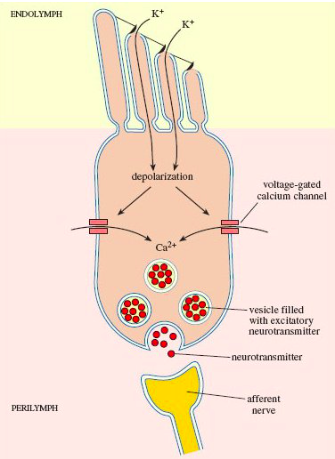
Step 5: The Brain Interprets the Neural Signals as Sound
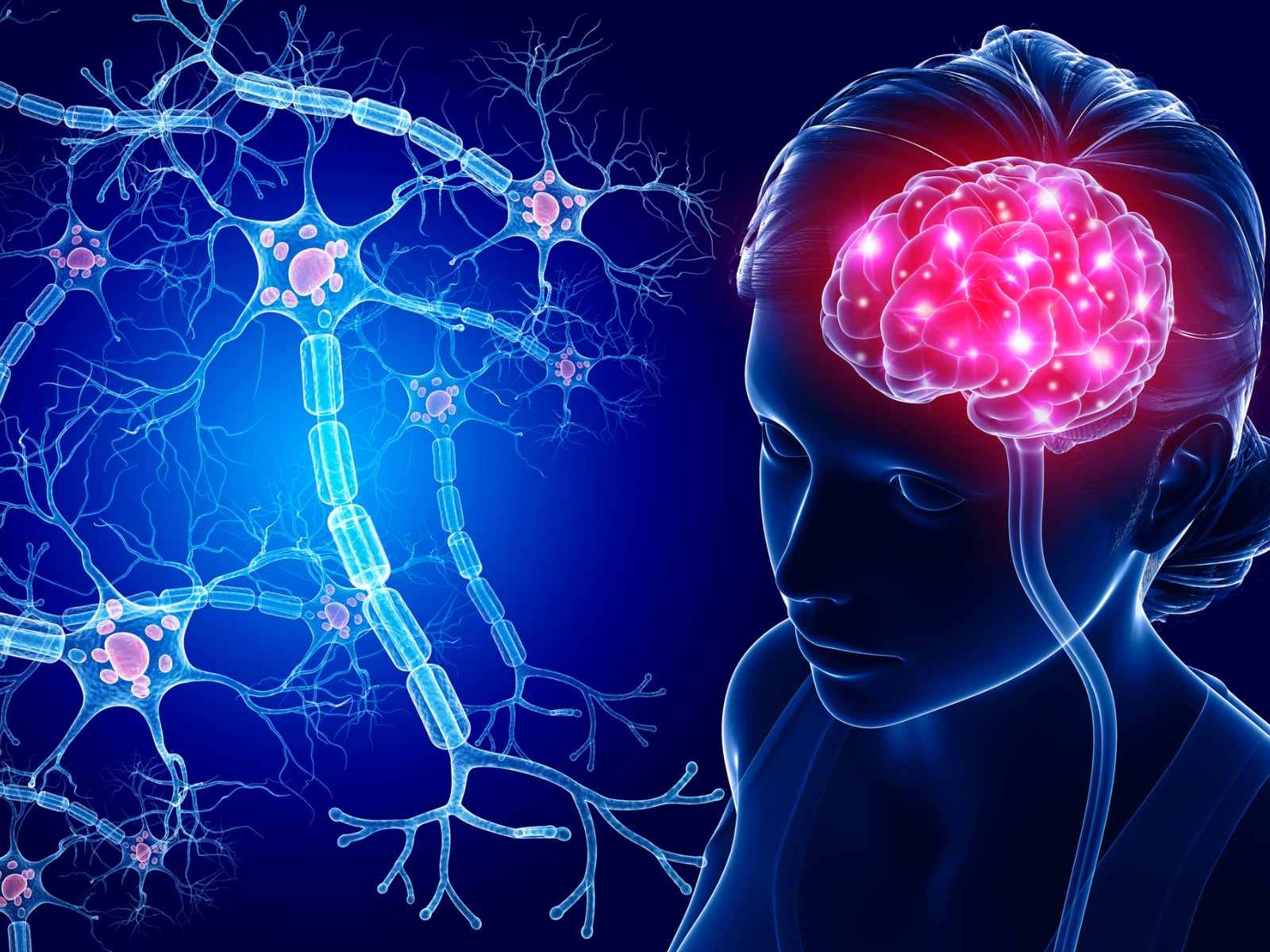
Once the neural signals reach the brain, they are processed by the auditory cortex, located in the temporal lobe.
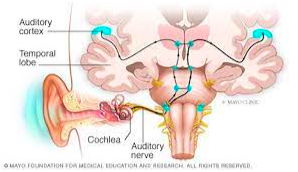
The brain then interprets and distinguishes between different sounds, such as high-pitched versus low-pitched, loud versus soft, environmental versus speech, male versus female voices, and many other nuances. This is how we can identify speech, music, or noise and understand what someone is saying, even in a noisy environment.
Hearing Loss Can Affect Any Part of the Process

Hearing loss can occur for many reasons, namely due to problems in any one of these steps in the hearing process.
For example, a perforation in the eardrum prevents sound from being transferred normally to the middle ear bones, which is an example of conductive hearing loss.
Loud sound exposure contributes to noise-induced hearing loss.
Finally, an auditory processing disorder disrupts the normal transmission and processing of sound to the brain.
When we look at each of these steps involved in hearing, it’s truly an amazing and complex process. However when something in only one of these steps is not working properly, it can produce hearing loss.
Therefore, it is best to have a comprehensive evaluation from an audiologist to assess your hearing and determine which part of the auditory system is causing the hearing loss.
Depending on the type and severity of hearing loss, it can be treated with medication, hearing aids, cochlear implants, surgery, or other interventions.
Conclusion
In summary, the hearing process is complex and fascinating as it involves the transmission of sound waves to neural signals and the interpretation of those signals in the brain.
Key points to remember:
- Understanding how hearing works can help us appreciate the importance of protecting our ears.
- Seek treatment for hearing loss if necessary.
- New and innovative technologies that can help us better communicate with the world around us.
👆Check out the animation video linked above for a more visual representation of the hearing process.



